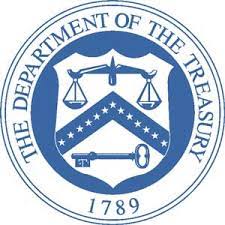






5-Star Service, Trusted & Loved by Hundreds
Your Appraiser Search Ends Here
Your Appraiser Search Ends Here
.avif)

Nationwide Coverage – Appraisals Anywhere in the US

Get it done Onsite or Online

Any Asset, Covered

Defensible for Any Purpose
Frequently Asked
Questions
No Frequently Asked Questions Found.
The agency's core responsibilities span five critical areas: tax collection, enforcement, taxpayer support, tax policy development, and refund management. Through tax collection, the IRS gathers federal taxes from individuals, businesses, and other entities, ensuring the financial foundation of government operations. Its enforcement division maintains system integrity by conducting audits, identifying potential tax evasion, and ensuring taxpayers meet their legal obligations.
Recognizing the complexity of tax regulations, the IRS provides comprehensive support through publications, online resources, and customer assistance. This commitment helps taxpayers navigate their financial responsibilities more effectively. Additionally, the agency plays a crucial role in developing and implementing tax policies by interpreting congressional legislation and creating clear, actionable regulations.
The IRS also manages the critical process of tax return processing and refund distribution, ensuring taxpayers receive their rightful returns efficiently. By leveraging technological advancements, the agency has modernized its approach, introducing e-filing options, online account management, and improved communication channels.
Beyond routine tax operations, the IRS handles specialized evaluations such as property valuation for tax purposes, including estate tax calculations and charitable contribution assessments. These precise valuations are essential for maintaining accuracy and fairness in the tax system.
At its core, the IRS represents more than a revenue collection agency. It is a vital institution that balances fiscal responsibility with taxpayer support, ensuring the financial mechanisms of the United States function smoothly and equitably.
The primary purpose of an IRS appraisal is to provide an objective, professionally validated assessment of an asset's fair market value. This valuation becomes essential in multiple contexts, from estate planning to charitable contributions and potential property transactions.
For individuals navigating complex tax landscapes, a professional appraisal offers multiple strategic advantages. It establishes a defensible, documented record of asset value that can withstand potential IRS scrutiny. Whether dealing with real estate, personal property, or significant financial holdings, an accurate appraisal helps taxpayers substantiate their reported values with credible, independent evidence.
The valuation process goes beyond simple number-tracking. It represents a comprehensive analysis that considers current market conditions, specific asset characteristics, and relevant economic factors. By obtaining a professional appraisal, individuals can confidently report asset values, minimize potential tax liabilities, and demonstrate transparency in their financial reporting.
Moreover, an appraisal provides crucial protection during potential tax audits. With detailed documentation from a qualified professional, taxpayers can effectively defend their reported asset values and reduce the risk of penalties or additional tax assessments.
Ultimately, an IRS appraisal is more than a procedural requirement—it's a strategic financial tool that enables precise, compliant, and informed tax management across diverse economic scenarios.
Professionally conducted by certified appraisers with deep expertise in personal property valuation, these assessments involve a systematic approach to determining asset worth. Appraisers perform detailed on-site inspections, carefully cataloging items, examining physical conditions, and analyzing supporting documentation such as purchase records and maintenance histories.
The valuation process considers multiple nuanced factors that influence an asset's value:
- Age and physical condition of items
- Current market demand and industry trends
- Brand reputation and manufacturing quality
- Functional utility and operational significance
- Technological relevance and potential obsolescence
Critical business scenarios that leverage FF&E appraisals include strategic financial planning, merger and acquisition due diligence, insurance coverage determination, and comprehensive asset management. The evaluation process provides a granular understanding of asset value, enabling businesses to make informed decisions about their tangible property investments.
By meticulously analyzing each asset's characteristics and market positioning, FF&E appraisals deliver a transparent, objective assessment that supports critical financial and strategic planning efforts. These detailed valuations serve as an essential tool for businesses seeking to understand the true economic value of their operational assets.
Modern online appraisal methodologies typically involve clients submitting clear, well-lit images of furniture, fixtures, and equipment along with comprehensive supporting documentation. These digital submissions allow experienced appraisers to analyze items' condition, authenticity, and market value with remarkable precision.
Video conferencing platforms have further enhanced remote appraisal capabilities, enabling real-time interactions where appraisers can examine items dynamically and clients can provide immediate context or additional details. This interactive approach ensures a comprehensive assessment that closely mirrors traditional in-person evaluations.
Successful online FF&E appraisals require meticulous documentation. Clients should prepare detailed information including precise item descriptions, brand specifications, purchase dates, maintenance records, and high-resolution images capturing multiple angles and potential wear indicators. The more comprehensive the provided information, the more accurate the resulting valuation.
Different industries—from hospitality and corporate environments to retail and educational institutions—can benefit from these flexible digital appraisal approaches. The process maintains professional standards while offering unprecedented convenience and efficiency for asset valuation needs.
While appraisers share core valuation skills, they differentiate through industry-specific knowledge and targeted specializations. Retail, hospitality, healthcare, office, industrial, and niche market appraisers each bring distinct perspectives tailored to unique asset environments.
Retail FF&E appraisers focus on commercial display environments, analyzing market trends and depreciation rates for store fixtures and point-of-sale equipment. Hospitality specialists evaluate furnishings within hotels and restaurants, considering brand standards and operational requirements.
Healthcare appraisers navigate complex medical equipment landscapes, assessing technological systems and medical infrastructure with rigorous attention to regulatory compliance. Office FF&E professionals examine corporate assets ranging from workstation furniture to technological infrastructure.
Industrial appraisers delve into manufacturing sector assets, evaluating machinery, production tools, and equipment while calculating functional and economic obsolescence. Specialized appraisers further extend these capabilities into niche markets like cinema equipment, sporting goods, or themed entertainment assets.
Selecting an appropriate FF&E appraiser requires careful consideration of industry context, asset complexity, and specific valuation objectives. The right professional brings deep sector knowledge, precise analytical skills, and comprehensive understanding of asset value dynamics.
Professional appraisals deliver precise valuations that support critical organizational functions. Tax compliance becomes streamlined, as documented asset values enable accurate reporting and potential tax deductions. In insurance contexts, detailed appraisals ensure comprehensive coverage, protecting businesses against potential losses from unexpected events.
Financial transparency is another significant benefit. Accurate FF&E assessments provide stakeholders, investors, and potential buyers with a clear understanding of an organization's asset portfolio. This transparency becomes particularly crucial during mergers, acquisitions, or comprehensive financial reviews.
Strategic asset management represents another key advantage. By understanding the current market value of equipment and furnishings, organizations can make informed decisions about replacements, upgrades, and long-term capital investments. This approach transforms asset evaluation from a routine administrative task into a strategic planning tool.
Legal and estate planning processes also benefit substantially from professional FF&E appraisals. These documented valuations provide objective, defensible assessments that can simplify complex transitions, reduce potential disputes, and ensure equitable asset distribution.
Ultimately, a comprehensive FF&E appraisal is more than a financial exercise. It is a strategic instrument that supports operational efficiency, financial planning, risk management, and organizational growth, providing businesses with a nuanced understanding of their physical asset landscape.
Understanding FF&E: Definition and Scope
Furniture, Fixtures, and Equipment (FF&E) refers to the movable items within a business that are essential for its operations but are not permanently affixed to the building. This includes everything from office chairs and tables to specialized equipment like computers and machinery. In the context of appraisals for IRS purposes, understanding the scope of FF&E is vital, as it directly impacts the value of assets for tax compliance and financial reporting.
The valuation of FF&E can be complex, as it involves assessing both the current market value and the condition of each asset. Factors such as age, functionality, and depreciation play a crucial role in determining the worth of these items. Additionally, different industries may have unique considerations; for example, a restaurant's FF&E appraisal will differ significantly from that of a law firm's office equipment.
For businesses looking to conduct FF&E appraisals for IRS purposes, accurate documentation and a thorough understanding of both the items themselves and relevant tax regulations are key. Proper appraisal practices ensure that businesses can substantiate their asset values during audits, leading to more compliant financial reporting. Engaging with professional appraisers who specialize in FF&E can provide the necessary insights and assistance in navigating these complexities.
Importance of FF&E Appraisals in Business Valuation
Furniture, Fixtures, and Equipment (FF&E) appraisals are crucial for accurately assessing the value of tangible assets within a business. These asset valuations play a significant role in financial reporting, lending, and investment decision-making. Knowing the value of FF&E helps businesses manage their resources effectively and provides transparency to stakeholders about the company’s overall worth.
In the context of the IRS, FF&E appraisals become particularly important for tax compliance and depreciation purposes. Business owners must accurately report the values of their assets to ensure proper tax deductions and avoid potential audits. An accurate appraisal can help substantiate asset values during an IRS review, thereby facilitating a smoother process for businesses in maintaining compliance.
Moreover, FF&E appraisals inform business decisions during mergers, acquisitions, or sales, influencing negotiations and affecting overall deal structures. Understanding the current market value of these assets allows businesses to make informed choices about capital allocation and investment opportunities. As such, a thorough FF&E appraisal should be considered a vital component of any comprehensive business valuation strategy.
Key Components of FF&E: What’s Included?
FF&E, which stands for Furniture, Fixtures, and Equipment, plays a crucial role in the valuation of a business's tangible assets. This category encompasses a wide range of items, including office furniture, machinery, and essential equipment used in daily operations. Understanding what qualifies as FF&E is vital for accurate appraisals, especially when considering tax implications and IRS reporting requirements. Each asset within this category not only contributes to the operational capacity of a business but can also significantly impact its overall valuation.
In addition to the physical items, FF&E appraisals are influenced by the condition, age, and useful life of each asset. While furniture and fixtures typically refer to items that support the infrastructure of a business, such as desks and shelving, equipment encompasses more specialized items like computers and industrial machines. Accurate appraisal of FF&E requires a comprehensive understanding of these components, allowing businesses to report their assets correctly for tax purposes and ensure compliance with IRS guidelines. Properly valuing FF&E is essential for both maximizing potential deductions and providing an accurate snapshot of a company's financial health.
The Role of FF&E Appraisals in IRS Compliance
FF&E appraisals play a crucial role in ensuring compliance with IRS regulations, particularly for businesses that hold significant tangible personal property. Furniture, Fixtures, and Equipment (FF&E) encompass a wide range of assets that can affect a company's balance sheet, tax deductions, and overall financial health. Accurate appraisals provide a clear valuation of these assets, which is essential for determining appropriate depreciation and ensuring that businesses report their financials accurately to the IRS. Without proper valuation, a business may face challenges during audits or tax assessments, which can lead to penalties or adjustments by the tax authority.
Moreover, the process of appraising FF&E is not merely about establishing market value; it also involves compliance with IRS standards for asset categorization and depreciation methods. Appraisers must be knowledgeable about applicable tax guidelines, including those related to Section 1245 and 1250 properties, to ensure proper handling of the assets in question. By obtaining a credible FF&E appraisal, businesses can strengthen their financial reporting and mitigate risks associated with IRS scrutiny. This proactive approach ultimately fosters better financial management and aids in strategic planning for future investments.
Common Scenarios Requiring FF&E Appraisals
FF&E appraisals are crucial in various scenarios, particularly for businesses looking to establish accurate asset valuations for tax purposes. For instance, when a business undergoes an acquisition or merger, a comprehensive appraisal of furniture, fixtures, and equipment is essential for determining the fair market value. This valuation can have significant tax implications, as accurate pricing helps both buyers and sellers understand their financial positions while ensuring compliance with IRS regulations.
Another common scenario involves businesses seeking financing or investment opportunities. Lenders often require detailed FF&E appraisals to assess the collateral value of a company's tangible assets before extending loans or credit. Additionally, during the process of insurance claims, a current appraisal can assist businesses in recovering losses by providing proof of value, which simplifies settlements and ensures that they receive adequate compensation for their equipment and furnishings.
Selecting Qualified Appraisers for FF&E
Selecting qualified appraisers for furniture, fixtures, and equipment (FF&E) appraisals is crucial to ensuring accurate valuations that meet IRS requirements. It's important to choose appraisers who possess specialized expertise in the specific types of FF&E being appraised, as this knowledge can significantly impact the accuracy of the appraisal. Look for professionals who have a solid background in both the appraisal process and the unique characteristics of the FF&E assets in question.
Another key factor in selecting an appraiser is their experience with IRS guidelines and compliance. Appraisers should be familiar with the applicable regulations to ensure that the valuation aligns with IRS standards, thereby minimizing the risk of disputes during audits. Moreover, choosing an appraiser who has demonstrated integrity and professionalism throughout their career can offer added assurance of a credible and reliable appraisal process.
In addition to expertise and compliance knowledge, consider the appraiser's reputation within the industry. Reviews, testimonials, and recommendations from past clients can provide insight into the appraiser's capabilities and work ethic. Engaging with professionals who have a track record of successful FF&E appraisals will not only expedite the appraisal process but also help achieve a valuation that stands up to scrutiny by the IRS.
The Appraisal Process: What to Expect
The appraisal process for Furniture, Fixtures, and Equipment (FF&E) involves several key steps to ensure that the valuation meets IRS standards. Initially, an appraiser will perform a thorough inspection of the assets to assess their condition, age, and market relevance. This hands-on evaluation is crucial as it allows the appraiser to gather essential information that informs the overall valuation. Factors such as wear and tear, functionality, and market trends will play a significant role in arriving at a fair and accurate appraisal value.
Following the physical inspection, the appraiser will utilize various valuation methods, including cost, market, and income approaches, to establish the asset's worth. Each method has its own merits and is chosen based on the specific context and purpose of the appraisal. The final appraisal report will comprehensively detail the findings, including photographs and justification for the determined value, ensuring compliance with IRS guidelines. Overall, understanding this process and what to expect can help individuals and businesses better prepare for FF&E appraisals and their implications for tax reporting.
Determining the Fair Market Value of FF&E
Determining the fair market value (FMV) of furniture, fixtures, and equipment (FF&E) is a crucial process for businesses, especially when it comes to compliance with IRS regulations. FMV is defined as the price that property would sell for on the open market, and accurately valuing FF&E relies on thorough assessments of individual items combined with market trends. Appraisers often consider several factors, including the condition, age, and useful life of each item, as well as current market demand and comparable sales data. This comprehensive evaluation process ensures that the values assigned are both justifiable and reflective of prevailing market conditions.
Moreover, understanding the nuances of FMV calculations can significantly impact financial reporting and tax obligations for businesses. Overstating or understating FF&E values can lead to discrepancies during audits, potentially resulting in penalties or unwanted scrutiny from tax authorities. Engaging skilled appraisers with industry expertise is vital, as they employ standardized valuation methods such as cost approach, sales comparison approach, and income approach to arrive at accurate FMV conclusions. By first establishing sound valuation principles, business owners can alleviate complications down the line while enhancing transparency in financial statements.
Documentation Required for FF&E Appraisals
When preparing for an FF&E appraisal, it is crucial to gather comprehensive documentation to support the valuation process. Typically, appraisers will require an inventory list detailing all furniture, fixtures, and equipment, along with purchase invoices or receipts. These documents help establish the original cost and condition of the items, providing a solid foundation for the appraisal. Additionally, any related service agreements or warranties can also enhance the credibility of the valuation by showing the potential longevity and reliability of the assets.
Furthermore, photographs of the FF&E items can play an essential role in the appraisal process. Visual documentation helps illustrate the current state and quality of the items, offering appraisers insight into their condition and marketability. Operational details, such as usage history and maintenance records, can also be valuable, as they provide context on how the items have been utilized within the business. Collectively, this information allows appraisers to formulate a more accurate and comprehensive valuation, ensuring compliance with IRS requirements.
IRS Regulations and Guidelines for FF&E
The Internal Revenue Service (IRS) provides specific guidelines regarding the appraisal of Furniture, Fixtures, and Equipment (FF&E) to ensure accurate valuation for tax purposes. When it comes to FF&E, it is essential to differentiate between items that are considered personal property and those classified as real property. The IRS generally allows businesses to depreciate FF&E over a specific lifespan, which can vary depending on the type of asset. Familiarizing oneself with these regulations can help businesses maximize their tax benefits while remaining compliant with IRS standards.
To comply with IRS requirements, it is crucial that FF&E appraisals adhere to the Uniform Standards of Professional Appraisal Practice (USPAP). These standards outline the ethical and professional responsibilities of appraisers, ensuring that valuations are conducted with impartiality and accuracy. Additionally, appraisers must provide well-supported and documented appraisals that include comparable sales data, market analysis, and relevant adjustments. By following these guidelines, businesses can ensure that their FF&E appraisals are credible and defensible should the IRS request further information or clarification.
Common Challenges in FF&E Appraisals
FF&E appraisals can present several challenges that appraisers and business owners should be aware of. One primary issue is the rapid depreciation of furniture, fixtures, and equipment, which can complicate the valuation process. Unlike real estate, which tends to retain value over time, FF&E assets can lose their worth quickly due to wear and tear, technological advancements, or changes in design trends, making accurate assessments essential for IRS reporting.
Another challenge in FF&E appraisals lies in the lack of universally accepted valuation methods. Different appraisers may employ varying approaches, such as market comparison, cost approach, or income approach, leading to discrepancies in valuation results. These differences can be further amplified by the diverse nature of FF&E items, as their value can be influenced by brand, condition, and market demand, making consistency an ongoing concern for businesses seeking accurate valuations.
Moreover, the need to follow IRS regulations adds complexity to the appraisal process. Appraisers must navigate specific guidelines regarding depreciation and asset categorization to ensure compliance. Failure to adhere to these rules can not only lead to inaccuracies in the valuation but also potential legal complications for businesses during audits, highlighting the importance of working with qualified appraisers who understand the nuances of FF&E appraisals in relation to IRS requirements.
Tips for Ensuring a Smooth Appraisal Process
To ensure a smooth appraisal process, it is essential to prepare an organized inventory of the furniture, fixtures, and equipment (FF&E) that need appraisal. This list should include detailed descriptions, photographs, and any relevant documents that demonstrate the asset's condition and value. A well-documented inventory not only streamlines the appraiser's work but also aids in establishing the fair market value, which is crucial for IRS compliance.
Communication with the appraiser is another key factor in facilitating the appraisal process. Discuss your goals and expectations upfront, and be transparent about any existing valuations, previous appraisals, or unique characteristics of the FF&E. This conversation helps the appraiser better understand your specific needs and can lead to a more accurate assessment that fulfills IRS requirements.
Finally, consider the timing of your appraisal. Scheduling the appraisal during periods when the FF&E can be easily accessed and evaluated will help avoid delays and additional costs. Additionally, being proactive about any potential logistical challenges, such as accessibility issues or asset condition, allows for a more efficient appraisal process and helps ensure that everything is completed smoothly and on time.
View all Locations
BEST-IN-CLASS APPRAISERS, CREDENTIALED BY:









.svg)










